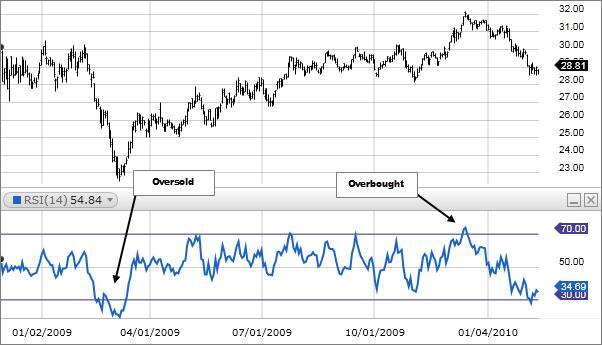2021
Understanding the Three Fee Types and How They Are Applied
Before 2015, you’d have recorded the $5,000 in upfront costs as an asset. As you amortized the cost of the loan, you’d reduce the asset account and transfer the money to Amortization Expense. Balloon loans typically have a relatively short term, and only a portion of the loan’s principal balance is amortized over that term. At the end of the term, the remaining balance is due as a final repayment, which is generally large (at least double the amount of previous payments).
Treat vehicles used by employees as being used 100% for business/investment purposes if the value of personal use is included in the employees’ gross income, or the employees reimburse the employer for the personal use. Use Form 4797, Sales of Business Property, to figure loan journal entry the recapture amount. If you acquired the property through a trade-in, special rules apply for determining the basis, recovery period, depreciation method, and convention. For more details, see Property acquired in a like-kind exchange or involuntary conversion, earlier.
- As soon as the borrower keeps paying, the fund’s liability keeps decreasing.
- See the tables for limitations on passenger vehicles and trucks and vans, later.
- This happens because the interest on the loan is greater than the amount of each payment.
- The amortization is done by using the effective rate of interest.
- If you converted the property from personal use to business/investment use, your basis for depreciation is the smaller of the property’s adjusted basis or its fair market value on the date of conversion.
Also, some financial planners suggest there are better uses for cash than paying down the mortgage balance. For borrowers who have credit card debt, an underfunded retirement account, or lack an emergency savings account, paying down the mortgage principal might not be the best financial decision. Another time loan recasting can be valuable is when a borrower is buying a new home before their current house has sold. If a borrower can qualify for the new home mortgage while still paying for the previous home, a loan recast can be done. The proceeds from selling the previous home can be used, in part, to pay down the principal on the new house.
Building home equity
The obvious benefit of a shorter amortization schedule is that you’ll save a lot of money on interest. “Amortization matters because the quicker you can amortize your loan, the faster you will build equity and the more money you can save over the life of your loan,” says real estate investor and flipper Luke Smith. Most lenders don’t offer these — and most home buyers don’t want them — because these loans are riskier and don’t help the borrower build equity as quickly.
Listed property used 50% or less in a qualified business use (as defined in the instructions for lines 26 and 27 below) does not qualify for the section 179 expense deduction or special depreciation allowance. Applicable depreciation methods are prescribed for each classification of property as follows. However, you can make an irrevocable election to use the straight line method for all property within a classification that is placed in service during the tax year. Enter “200 DB” for 200% declining balance, “150 DB” for 150% declining balance, or “S/L” for straight line. For tangible property placed in service in tax years beginning before 2022 and depreciated under MACRS (“MACRS asset”), enter the deductions for the current year.
What is mortgage amortization and how do you use it to save money on your home loan? – CNBC
What is mortgage amortization and how do you use it to save money on your home loan?.
Posted: Sat, 13 May 2023 07:00:00 GMT [source]
Your payment breakdown is very important because it determines how quickly you build home equity. Equity, in turn, affects your ability to refinance, pay off your home early, or borrow money with a second mortgage. Hence, the cost of issuance, https://online-accounting.net/ interest, and premium has been amortized over the life of the note payable, which was three years. It’s important to note that the face amount of the loan is $10 million, and we have recorded $9.8 million as the opening balance.
Key Aspects of Section 1071: The Small Business Lending Final Rule
If the loan is paid off early, any unearned amount of the fee is returned to the borrower during the payoff. The loan fees are amortized through Interest expense in a Company’s income statement over the period of the related debt agreement. When businesses amortize expenses over time, they help tie the cost of using an asset to the revenues that it generates in the same accounting period, in accordance with generally accepted accounting principles (GAAP). For example, a company benefits from the use of a long-term asset over a number of years.
- The amortizable amount of a pollution control facility is reduced by any special depreciation allowance included on line 14 for that facility.
- For example, if you pay a standby fee to have a line of credit available, you can’t deduct it as an interest payment.
- If you can, this will allow you to save on interest and thereby reduce your monthly payment.
- Also, if the loan has been sold to an investor, the investor must agree to a loan recast along with your mortgage servicer.
Suppose you pay your bank $100,000 tomorrow to take out a three-year, $3 million loan. Rather than treat the $100,000 as a regular business expense, the accounting treatment of loan processing fees requires claiming it gradually over the life of the loan. Miscellaneous fees are applied after a loan is opened when certain actions take place on the account.
How to Calculate Amortization with an Extra Payment
For certain specified plants bearing fruits and nuts planted or grafted after December 31, 2022, and before January 1, 2024, the special depreciation allowance is limited to 80% of the adjusted basis of the specified plants. Certain qualified reuse and recycling property (defined below) placed in service after August 31, 2008, is eligible for a 50% special depreciation allowance. Enter the elected section 179 cost of listed property in column (i) of line 26.
Home Equity Loan Amortization: How it Works – credible.com
Home Equity Loan Amortization: How it Works.
Posted: Wed, 15 Mar 2023 07:00:00 GMT [source]
For example, if you pay a standby fee to have a line of credit available, you can’t deduct it as an interest payment. For example, suppose you apply to your bank for a $5 million credit line, accessible for the next three years, with upfront costs of $100,000. When you sign all the paperwork, you report the $100,000 as an asset, then amortize the amount over three years. FASB accepts the amortization of finance fees this way, even if you never draw on the credit line. Upfront loan fees can include origination fees, points, placement fees, application fees, management fees and more.
Can I consider my loan origination fees and costs as immaterial?
By changing the inputs—interest rate, loan term, amount borrowed—you can see what your monthly payment will be, how much of each payment will go toward principal and interest, and what your long-term interest costs will be. This type of calculator works for any loan with fixed monthly payments and a defined end date, whether it’s a student loan, auto loan, or fixed-rate mortgage. Basic amortization schedules do not account for extra payments, but this doesn’t mean that borrowers can’t pay extra towards their loans. Generally, amortization schedules only work for fixed-rate loans and not adjustable-rate mortgages, variable rate loans, or lines of credit.
Report on this line depreciation for property that you elect to depreciate under the unit-of-production method or any other method not based on a term of years (other than the retirement-replacement-betterment method). You can elect, for any class of property, to not deduct any special depreciation allowance for all such property in such class placed in service during the tax year. You can elect to claim a 100% special depreciation allowance for the adjusted basis of certain specified plants (defined later) bearing fruits and nuts planted or grafted after September 27, 2017, and before January 1, 2023.

Thus, it writes off the expense incrementally over the useful life of that asset. Amortized loans feature a level payment over their lives, which helps individuals budget their cash flows over the long term. Amortized loans are also beneficial in that there is always a principal component in each payment, so that the outstanding balance of the loan is reduced incrementally over time.
Whether your goal is to reduce your monthly mortgage payments or pay off your mortgage loan early, several strategies can help you. Refinancing lets homeowners rebook their mortgage loans to take advantage of lower interest rates. However, not all borrowers can qualify for a mortgage refinance. A lesser-known option for some borrowers is called a re-amortization or loan recasting. Secured loans require an asset as collateral while unsecured loans do not.

If the repayment model on a loan is not fully amortized, then the last payment due may be a large balloon payment of all remaining principal and interest. If the borrower lacks the funds or assets to immediately make that payment, or adequate credit to refinance the balance into a new loan, the borrower may end up in default. For business startup and organizational costs paid or incurred before October 23, 2004, you can elect an amortization period of 60 months or more. You can deduct a special depreciation allowance on a certified pollution control facility that is qualified property. However, you must reduce the amount on which you figure your amortization deduction by any special depreciation allowance allowed or allowable, whichever is greater.
Common home equity loan fees include an appraisal fee generally between $300 and $400, notary fees between $50 and $200, and title search fees of $100 or less. You’ll also pay a loan origination fee that’s a percentage of the total amount you’re borrowing. A home equity loan functions much like a mortgage where you’re provided a lump sum up at closing and then you begin repayment. Every month, you’ll make the same payment amount, which is a combined principal and interest payment, until your loan is paid off. In the first half of the loan, you’ll make interest-heavy payments and then principal-heavy payments in the second half — this is called amortization. If the repayment model for a loan is “fully amortized”, then the last payment (which, if the schedule was calculated correctly, should be equal to all others) pays off all remaining principal and interest on the loan.
Smith explains that you can treat your 30-year loan like a 15-year loan by choosing to make larger or extra payments. Then, if more funds are available in your budget, pay your loan down more quickly than scheduled,” he says. One way to do this is by refinancing into a shorter loan term, like a 10-, 15-, or 20-year mortgage. So a shorter repayment schedule doesn’t just help you save money on interest — it also helps you build tappable home equity more quickly. As a result, you can’t assume that completing half the loan term means you’ve paid off half your loan amount.